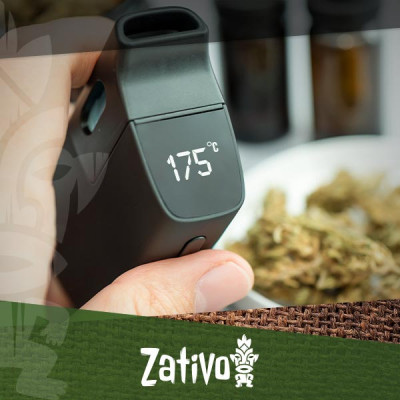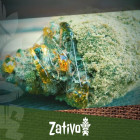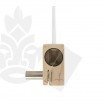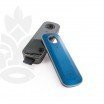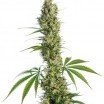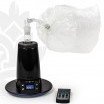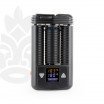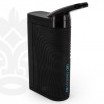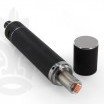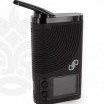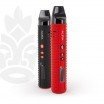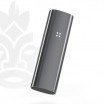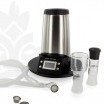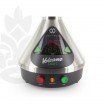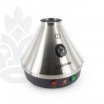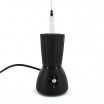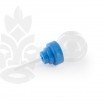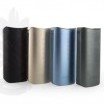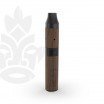Don't have an account?
Register NowYou have to add to cart at least 5 bottles or any program to make checkout.
- BlogWhat Is The Best Temperature To Vaporize Cannabis?
What Is The Best Temperature To Vaporize Cannabis?
Published: February 20th, 2025
Categories:
Cannabis Info • Medical Cannabis
Few technologies have had as big an impact on cannabis as vaporizing. Offering a more efficient and "pure" way to enjoy weed, vaping has quickly become the preferred consumption method for many recreational and medical cannabis users alike. In this article, we explore the importance of temperature when vaping, and shine a light on the temperatures at which different cannabinoids and terpenes evaporate, so you can get the most out of your cannabis.
What Are the Benefits of Adjusting Your Vaporizer Temperature?
Vaping is often (incorrectly) touted as a healthy alternative to smoking. And while it doesn't come without risks, vaping does allow cannabis users to control the temperature at which they heat their cannabis, maximising the herb's effects and minimising their exposure to certain toxic chemicals.
Temperature is really important when consuming cannabis, as the cannabinoids and terpenes that give weed its unique aromas, flavours, and effects burn at relatively low temperatures—much lower than the temperature of an average joint, blunt, or bowl (which can reach temperatures of at least 300°C+).
When we expose cannabis to such high heat, we end up combusting and largely destroying its active compounds. As a result, the smoke we inhale from a joint or bowl actually contains very few cannabinoids and terpenes. In fact, studies have shown that cannabis smoke is strikingly similar to tobacco smoke, both on a physical and chemical level. Rather than being rich in cannabis compounds, marijuana smoke has been shown to contain up to 97% volatile compounds—many of which are known to be highly toxic.
By turning in your lighter for a vaporizer, however, you're able to change all that and enjoy a cleaner and more potent high. By controlling the temperature of your vaporizer, you can heat your herb to exactly the right level to evaporate cannabinoids and terpenes without burning them. Not only will your body thank you for it, but your wallet will too—vaping is much more efficient at extracting cannabis compounds from your weed, meaning you'll find yourself needing much less herb when vaping than when smoking.
The Best Temperatures for Vaporizing Different Cannabinoids and Terpenes
Different cannabis compounds evaporate/boil at different temperatures. Knowing what those temperatures are allows you to adjust your vaporizer to deliver the desired effect. Note that cannabis usually starts to combust at 230°C, so it's best to avoid setting your vape above this temperature.
Note: Unfortunately, you can't have your space cake and eat it too. Because cannabinoids and terpenes evaporate at radically different temperatures, it's impossible to set up your vape in a way that evenly extracts all of the compounds in your weed at once. Instead, you'll need to settle for a temperature that maximises the extraction of the cannabinoids and terpenes that appeal to you most.
Cannabinoids
Cannabinoids like THC, CBD, and CBN are prime activators of the endocannabinoid system and play a key role in producing the unique effects we associate with cannabis.
THC
Boiling point: 155–160°C
THC is considered the main intoxicating compound in cannabis. It binds to CB1 receptors, producing the iconic cannabis high/stone. If you're a recreational user trying to get as high as possible or a medical marijuana patient using THC to treat specific symptoms/ailments, be sure to set your vape to at least 155–160°C to extract as much THC as you can.
CBD
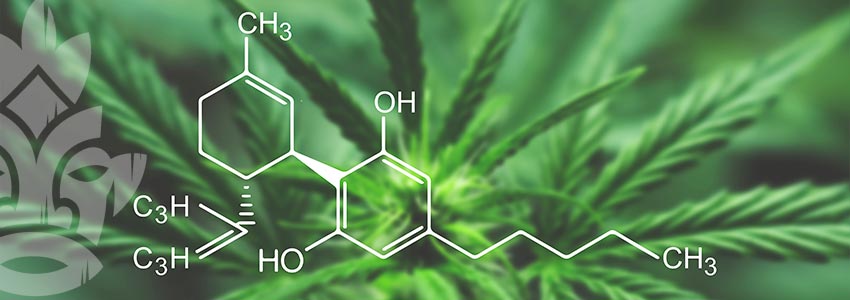
Boiling point: 180°C
CBD isn't intoxicating, but it's still a widely used compound, both by recreational users looking for a milder effect and medical patients seeking specific benefits. To maximise the release of CBD, set your vape to at least 180°C. Even if you're using weed with both THC and CBD, still set your device to 180°C to ensure you properly extract both compounds (don't worry—at such low temperatures, you’ll still get to enjoy THC without combusting your weed).
CBN
Boiling point: 185°C
CBN is produced gradually through the degradation of THC and is found in higher concentrations in cannabis that is harvested a little late or cured for a long time. While there's still a lot we don't know about the effects of CBN, many users treasure its mildly intoxicating, potentially sedative effect. For those who favour more energising cannabis, consider setting your vape temperature below 185°C to avoid extracting CBN from your herb.
CBC
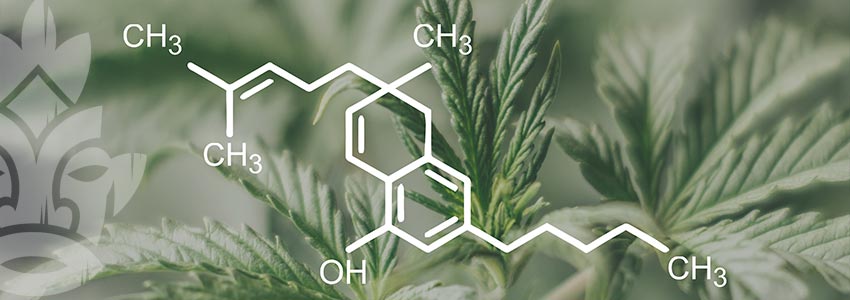
Boiling point: 185°C
CBC, or cannabichromene, is among the first cannabinoids produced in the cannabis plant. Like many so-called secondary cannabinoids (because they're not as prominent in modern cannabis varieties), we know very little about the effects of CBC. Research suggests, however, that it is non-intoxicating and may have various therapeutic applications. If you're looking to extract CBC from your weed, first ask your budtender for a strain rich in CBC, then set your vape to 185°C.
THCV
Boiling point: 220°C
THCV, or tetrahydrocannabivarin, as you might expect from its name, is somewhat similar to THC. In fact, its structure is very similar to THC and anandamide (a cannabinoid produced naturally by the body), meaning it can act directly on CB1 and partially on CB2 receptors. It is said to be mildly intoxicating, though not as much as THC. While more research is needed, THCV seems to have interesting effects on appetite, stress, and more. If you're interested in extracting THCV from your weed, make sure to crank up the heat on your vape.
CBG
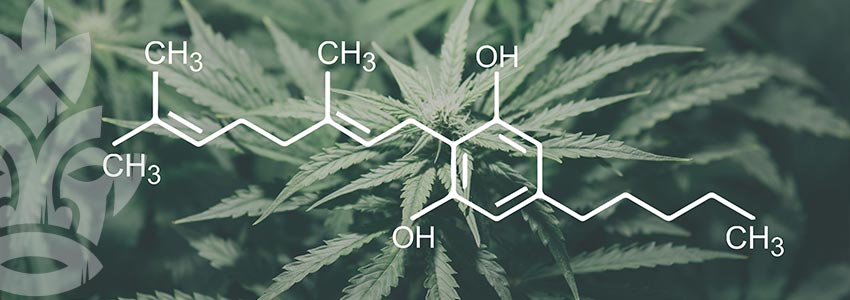
Boiling point: 105°C
CBG is often touted as the "mother of all cannabinoids". That's because its acidic precursor, CBGA (cannabigerolic acid), is the first cannabinoid produced in cannabis and hemp plant. THCA (tetrahydrocannabinolic acid), CBDA (cannabidiolic acid), and CBCA (cannabichromenic acid) are all synthesised from CBGA, and later turn into THC, CBD, and CBC (respectively) through decarboxylation. Like other cannabinoids, CBG seems to have potential benefits that, hopefully, will be the focus of more scientific research in the future. If you have high-CBG weed and want to make the most of it, run your vape at a cool 105°C.
Terpenes
Terpenes are not only responsible for the unique aromas and flavours of cannabis—they may also play an important role in the effects and benefits of different strains. Unfortunately, terpenes are super sensitive to heat, so be sure to closely monitor the temperature of your vape to make sure you preserve as many of them as possible.
Beta-caryophyllene
Boiling point: 119°C
Beta-caryophyllene is found in high concentrations in the essential oils of pepper, oregano, cinnamon, cloves, and hops. It's also found in many cannabis strains, providing a toasted, peppery kick. Studies show that it can bind directly to cannabinoid receptors, and some research has begun to observe beta-caryophyllene's medical potential.
Alpha-terpineol
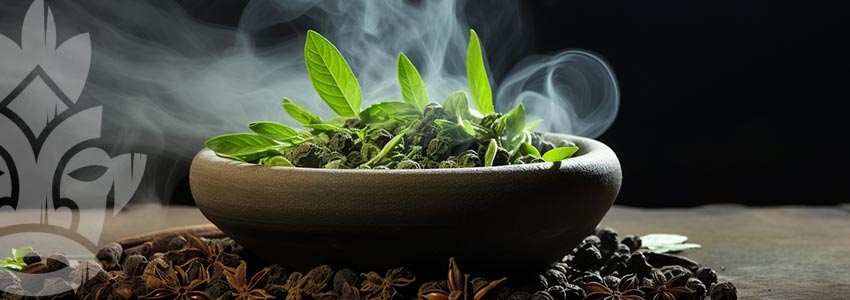
Boiling point: 218°C
Alpha-terpineol can be found in the essential oil of cardamom, pine, and cajuput oil (which is made from myrtle trees). Perfumers describe the aroma of alpha-terpineol to be sweet and floral, like lilac, with piney, wood notes. Unfortunately, little information is available about alpha-terpineol and how it might affect our experience of cannabis.
Beta-myrcene
Boiling point: 166–168°C
Beta-myrcene is one of the most common terpenes in modern cannabis, but it is also present in mangoes, hops, lemongrass, basil, and more. Given its prevalence in cannabis and many other plants, myrcene is arguably one of the best-understood cannabis terpenes. Research has sought to observe, for example, beta-myrcene's potential analgesic and sedative effects.
D-limonene
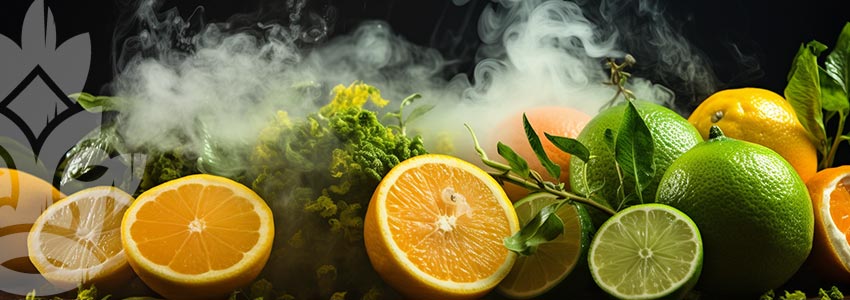
Boiling point: 177°C
Limonene is another prominent cannabis terpene. As its name suggests, it is often found in high concentrations in citrus fruits and peels. Besides being used as a fragrance in cosmetics and an aromatic and flavouring agent in food and drinks, limonene has also been studied for its impact on tumour growth, alertness, and much more.
Linalool
Boiling point: 198°C
Linalool is naturally present in rose, lavender, basil, and other essential plant oils. It is also found in cannabis, though in lower concentrations than more prominent terpenes like myrcene, limonene, and caryophyllene. The limited body of research into linalool suggests that it might have antibacterial properties, as well as potential as an anxiolytic, though more research is needed to better understand how this terpene might act on the body, especially in the presence of other cannabis compounds.
Finding the Best Vaping Temperature to Suit You
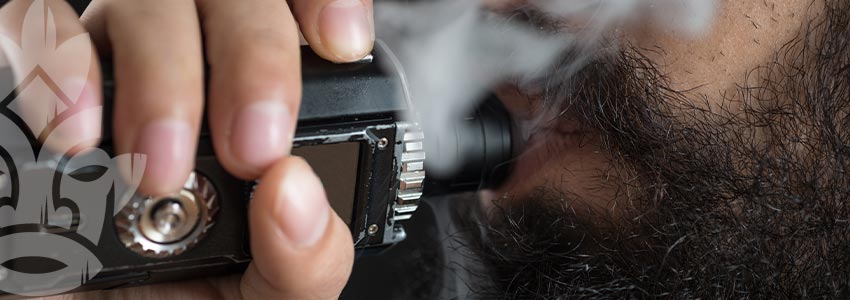
Vaping allows you to personalise your cannabis experience, so feel free to experiment with different vape temperatures to find what best suits you. Some good starting temperatures to try include:
- 175–180°C: This range is ideal for preserving the most terpenes and enjoying full-flavoured, aromatic hits. At such low temperatures, you'll also enjoy a clear-headed, energetic high that's great for daytime use, boosting creativity, or social settings.
- 180–190°C: At this range, you’ll extract more cannabinoids from your weed while still preserving most terpenes. You'll enjoy flavourful hits, larger clouds of vapor, and a more intoxicating high that's ideal for the evenings, weekends, or whenever you're free to enjoy an intense effect.
- 190–210°C: Reaching the upper threshold, this range is ideal for achieving the most intoxicating effects and the strongest, thickest clouds of vapor.
Vaping Temperature: Highly Customisable!
Picking a vape temperature really depends on your preferences. The temperatures mentioned above are quite popular with a lot of users, but feel free to explore other ranges to see how they compare. Moreover, consider adjusting your settings to suit your weed (e.g. moist bud is best vaporized at slightly higher temperatures). Take your time to play around with different settings until you achieve the best possible vaping experience.

